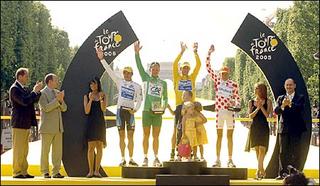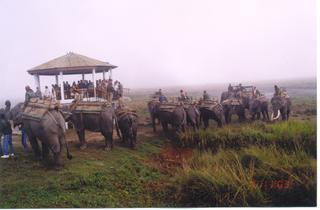
Located on the western border of India, Amritsar is the city of the Golden Temple. It has derived its name from Amrit Sarovar, the lake on which the Golden Temple stands. Going to Amritsar was a spontaneous decision. My colleague Dibakar and his friend Navin, both with families were the companions for the trip. Traveling by the Golden Temple Mail, we reached Amritsar on the fine morning of 26th Aug, 2005. After little scouting, we moved into a hotel close to the Golden Temple. Soon we were out exploring the city. The 3 most important locations of the city are the Jalianwala Bagh Memorial, the Golden Temple and the Wagah Border. We covered all these on day 1. To enable posting with photos, I am writing separately on each of these spots. I start with the Jalianwala Bag Memorial, which was hardly 20 meters from our hotel and so was our first destination.
Jalianwala Bagh :
Located just 5 minutes walk from the Golden Temple, enclosed by old buildings on all sides, this is one monument that lies peacefully remembering those who had laid down their lives at the hands of colonialist impresser. There is no arched entrance here. Just a 3 feet galli between two buildings leads you into the memorial. A marble plaque on the wall says that Gen. Dyer bought his guns through this galli. Once you are into open space, a pyramid shaped stone stands at the point from where firing on the crowd was carried out. Some of the surrounding buildings still bears the marks of bullets that missed the crowd and got embedded in the walls. The Martyr’s Well is an enclosed monument. There is a martyr’s gallery inside the park. The place bears a peaceful atmosphere despite a large number of tourists.
Jalianwala Bagh :
Located just 5 minutes walk from the Golden Temple, enclosed by old buildings on all sides, this is one monument that lies peacefully remembering those who had laid down their lives at the hands of colonialist impresser. There is no arched entrance here. Just a 3 feet galli between two buildings leads you into the memorial. A marble plaque on the wall says that Gen. Dyer bought his guns through this galli. Once you are into open space, a pyramid shaped stone stands at the point from where firing on the crowd was carried out. Some of the surrounding buildings still bears the marks of bullets that missed the crowd and got embedded in the walls. The Martyr’s Well is an enclosed monument. There is a martyr’s gallery inside the park. The place bears a peaceful atmosphere despite a large number of tourists.
Here is what I have collected of History from the site --
People in Amritsar observed a hartal on 6th April, 1919 to protest against the Rowlatt Act (passed in Mar, 1919). Following this protest British arrested Dr. Saifuddin Kitchlu and Dr. Satyapal, two noted leaders of the city. This led to a lot of resentment and violent unrest in the city. Sir Michael O’Dwyer, who was the Governor of Punjab, had declared martial law. Following this Brig. Gen. Reginald Edward Harry Dyer from Jallandhar cantonment took over control of the city. Around 2000 people had gathered on the Jalianwala Bagh compound in the afternoon of 13th April, 1919 to held a meeting. It was the Baisakhi day. Gen. Dyer bought his force to the ground and started indiscriminate firing on the crowd. The firing started at 10 minutes to six and lasted for about 7 minutes. This left 337 men, 41 boys and one 7 week baby dead. 120 bodies were recovered from the well located in the area.
Following a resolution by INC, a trust was formed in 1920 to build a memorial in the place of massacre. The piece of land originally belonged to one Bhai Hamit Singh Jallawala. The trust bought this land in 1923 for a price of Rs.5.65 lakh, a huge amount then. The memorial was inaugurated on 13th April, 1961 by the then President of India, Dr.. Rajendra Prasad in presence of leaders like Jawaharlal Nehru.
On Mar 13, 1940, Udham Singh shot dead Sir Michael O’Dwyer, the DC of Amritsar during the massacre, at the Caxton Hall in London. Udham Singh was present at Jallinwala Bagh on that fateful day. According to him Sir Dwyer was actually responsible for the killings. Udham Singh was later hanged in London. Among those remembered in the martyr’s gallery at the park is Madan Lal Dhingra who embraced martyrdom by shooting dead William Curzon Wylie and Kiwis Lal Kaka on July 9, 1909 at a meeting of the Indian National Association at the Jehangir House in London. He was later hanged in London.
People in Amritsar observed a hartal on 6th April, 1919 to protest against the Rowlatt Act (passed in Mar, 1919). Following this protest British arrested Dr. Saifuddin Kitchlu and Dr. Satyapal, two noted leaders of the city. This led to a lot of resentment and violent unrest in the city. Sir Michael O’Dwyer, who was the Governor of Punjab, had declared martial law. Following this Brig. Gen. Reginald Edward Harry Dyer from Jallandhar cantonment took over control of the city. Around 2000 people had gathered on the Jalianwala Bagh compound in the afternoon of 13th April, 1919 to held a meeting. It was the Baisakhi day. Gen. Dyer bought his force to the ground and started indiscriminate firing on the crowd. The firing started at 10 minutes to six and lasted for about 7 minutes. This left 337 men, 41 boys and one 7 week baby dead. 120 bodies were recovered from the well located in the area.
Following a resolution by INC, a trust was formed in 1920 to build a memorial in the place of massacre. The piece of land originally belonged to one Bhai Hamit Singh Jallawala. The trust bought this land in 1923 for a price of Rs.5.65 lakh, a huge amount then. The memorial was inaugurated on 13th April, 1961 by the then President of India, Dr.. Rajendra Prasad in presence of leaders like Jawaharlal Nehru.
On Mar 13, 1940, Udham Singh shot dead Sir Michael O’Dwyer, the DC of Amritsar during the massacre, at the Caxton Hall in London. Udham Singh was present at Jallinwala Bagh on that fateful day. According to him Sir Dwyer was actually responsible for the killings. Udham Singh was later hanged in London. Among those remembered in the martyr’s gallery at the park is Madan Lal Dhingra who embraced martyrdom by shooting dead William Curzon Wylie and Kiwis Lal Kaka on July 9, 1909 at a meeting of the Indian National Association at the Jehangir House in London. He was later hanged in London.
(Note : I have updated these facts collected at the site in en.Wikipedia.org as well.)






